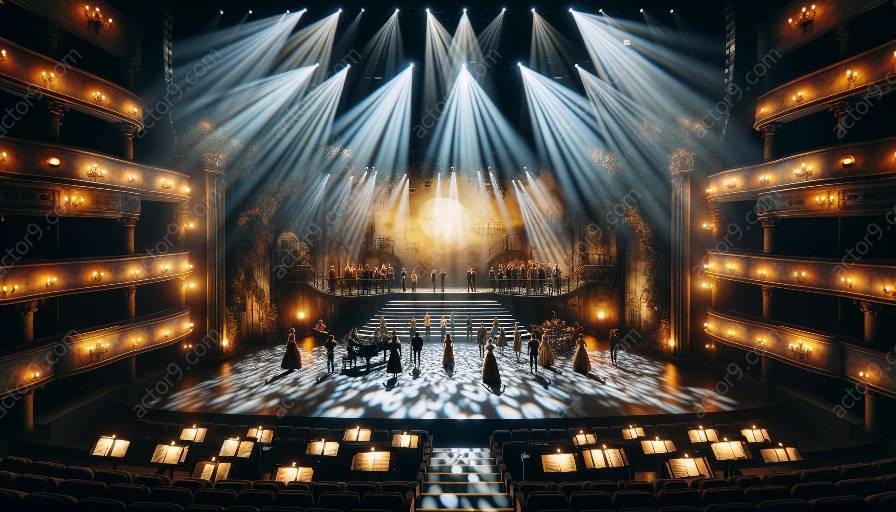Exploring the impact of lighting design on audience psychology in musical theatre can enhance our understanding of the immersive and emotional experiences of live performances. In this comprehensive topic cluster, we delve into the various psychological effects of different lighting designs in the context of musical theatre.
Understanding Lighting Design in Musical Theatre
Lighting design in musical theatre plays a crucial role in setting the mood, enhancing visuals, and guiding the audience's perception and emotional engagement. A well-crafted lighting design can evoke various emotions, create a sense of atmosphere, and direct the audience's attention to key elements of the performance.
The Influence of Lighting on Emotions
Lighting designs have the power to evoke and manipulate emotions in audience members. For instance, the use of warm, soft lighting can create a sense of intimacy and comfort, whereas harsh, cool lighting may induce feelings of tension or unease. By understanding the psychological impact of different lighting styles, designers can strategically influence the emotional responses of the audience.
1. Color Psychology
Colors used in lighting can impact the audience's emotional state. For example, warm colors like red and orange can convey passion and energy, while cool colors like blue and green may promote feelings of calmness and tranquility.
2. Intensity and Contrast
The intensity and contrast of lighting can also influence audience emotions. Dramatic variations in brightness and darkness can create suspense, highlight dramatic moments, and evoke a heightened emotional response.
3. Dynamic Lighting Changes
Dynamic lighting changes, such as gradual shifts in color or intensity, can lead to a transformative experience for audiences. These changes can mirror the emotional arcs of the narrative and enhance the overall impact of the performance.
Perception and Spatial Awareness
Lighting design can manipulate audience perception and spatial awareness within the theatrical environment. By strategically illuminating certain areas or using directional lighting, designers can guide the audience's attention and create a sense of depth and dimension within the performance space.
1. Focal Points and Visual Hierarchy
Through selective lighting, designers can establish focal points on stage, directing the audience's gaze and shaping their understanding of the narrative. This visual hierarchy can contribute to the psychological immersion of the audience.
2. Spatial Illusions
Utilizing lighting techniques such as spotlighting or shadow play, designers can create spatial illusions, expanding or contracting the perceived dimensions of the stage and influencing audience spatial perception.
Impact on Cognitive Processing
The interplay between lighting and cognitive processing can significantly affect the audience's engagement and comprehension of the performance. Varied lighting designs can influence how audience members interpret the storyline, characters, and thematic elements of the musical theatre production.
1. Visual Memory and Recall
Distinct lighting designs can imprint specific visual memories in the minds of audience members, impacting their ability to recall and emotionally connect with the performance long after it concludes.
2. Symbolism and Subconscious Messaging
Lighting design can convey symbolic meanings and subliminal messages, subtly influencing audience interpretations and reactions to the themes and motifs presented on stage.
Conclusion
In conclusion, the psychological effects of different lighting designs on audience members in a musical theatre context are multifaceted and powerful. By understanding the impact of lighting on emotions, perceptions, and cognitive processing, theatrical professionals can harness the potential of lighting design to create captivating and emotionally resonant experiences for audiences.




































